A quick look inside the camera bag of most photographers will usually reveal at least one wide-angle prime or zoom. Wide-angle lenses make it possible to include much more of the scene in your composition, making them an excellent choice for landscapes, as well as other genres such as architecture (both indoors and out), group shots, and astrophotography.
In Sony APS-C terms, any lens with a focal length of 23mm (35mm in 35mm terms) or wider is classified as a wide-angle lens, whereas anything wider than 16mm (24mm in 35mm terms) falls into the ultra-wide lens category.
In this article, we’re going to take a look at the best wide-angle options currently available to those who use Sony APS-C models such as the a6000, a6300, a6400 and a6500. We consider this list dynamic in that we plan to update it whenever Sony or a third-party company release a relevant wide-angle product and we are able to test it.
Ethics statement: All opinions expressed in this article are based on our real-world experience with each lens unless otherwise stated. We were not asked to write anything about these products, nor were we provided any compensation of any kind. Within the article, there are affiliate links. If you decide to buy something after clicking the link, we will receive a small commission. To know more about our ethics, you can visit our full disclosure page. Thank you!
Table of contents
1. Super-Wide Prime Lenses
2. Wide Prime Lenses
3. Wide-Angle Zoom Lenses
4. Excluded / Not yet tested lenses
Wide Angle Prime Lenses for Sony E-mount
Wide-angle prime lenses are a good choice, not only because they tend to offer better optical quality than zooms but also because they usually boast a brighter maximum aperture. The latter is useful if you want to separate the subject from the background or gather as much ambient light as possible for night and astrophotography.
Within the E-mount category, there are now plenty of prime lenses to choose between as you’ll see below.
Super-Wide Prime Lenses
The widest: Laowa 9mm f/2.8 Zero-D
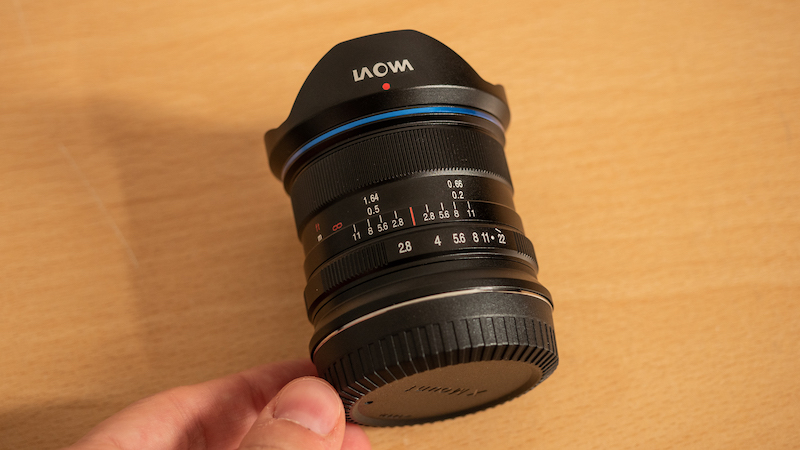
The widest lens on the list, equating to 13.5mm in 35mm terms, is the Laowa 9mm f/2.8 Zero-D lens. We’ve only ever tested it on Fujifilm X Series cameras but it is also available for Sony APS-C.
The first thing that should be said about this lens is that it is tiny – so tiny in fact that you should have no trouble finding a spot for it inside your camera bag or your jacket pocket. It features a solid metal build (albeit without weather-sealing) and comes with a clicking aperture ring and smooth focus ring complete with a distance scale. Included is a small petal shaped lens hood. Make sure it is perfectly straight, otherwise it may cause some dark shading in the corners of your image due to the wide nature of the lens. You can also fit 49mm filters to the front.
Sharpness is impressive across the frame even at the fastest aperture, and as the Zero-D moniker suggests, there is very little distortion to speak of. Some strong flare and ghosting can appear in extreme backlit situations but I didn’t find it to be overly problematic. Chromatic aberration is minimal, as is vignetting.
The only drawback of this lens is the lack of electronic contacts on the mount, meaning that the lens doesn’t transfer EXIF data to the camera. This can be bothersome if you like keeping track of your aperture values.
Were I to buy an extreme wide angle lens for my personal collection, this would definitely be it.
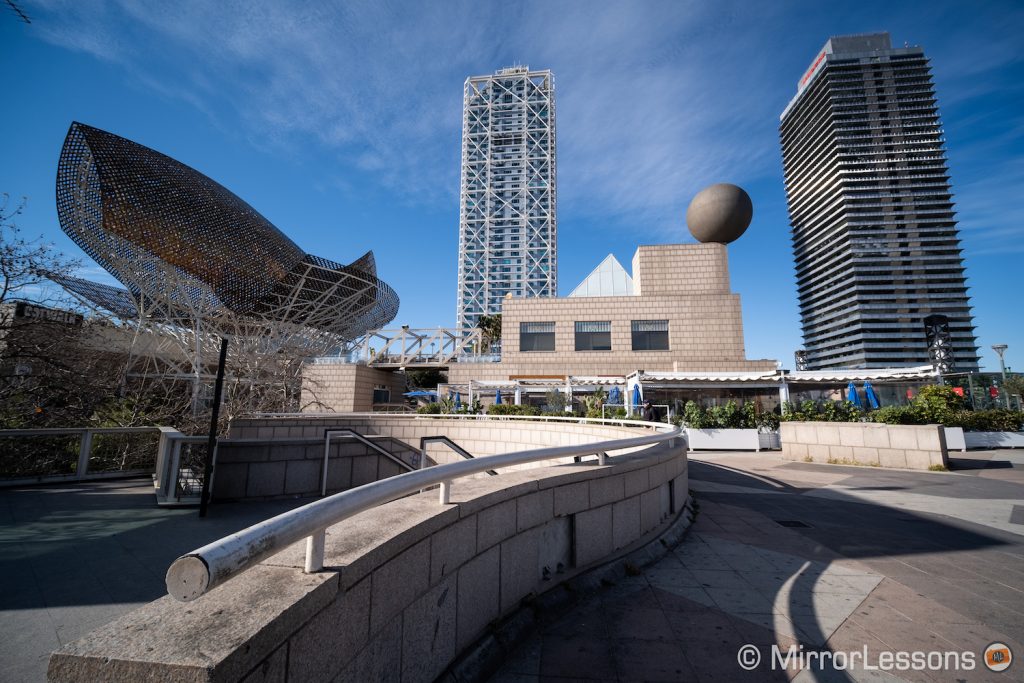
Why choose the Laowa 9mm f/2.8 Zero-D for your Sony APS-C camera:
- optical quality is excellent
- very little distortion as promised
- the 2.8 aperture is handy for low-light work
- compact and affordable for a wide-angle lens
To consider:
- no weather-sealing
- lack of electronic contacts means you cannot transfer EXIF data
Reminder: the links below are affiliate links. If you decided to buy something after clicking the link, we will receive a small commission.
Check price on Amazon | Amazon UK | B&H Photo | eBay
The best: Samyang Rokinon 12mm f/2 NCS CS
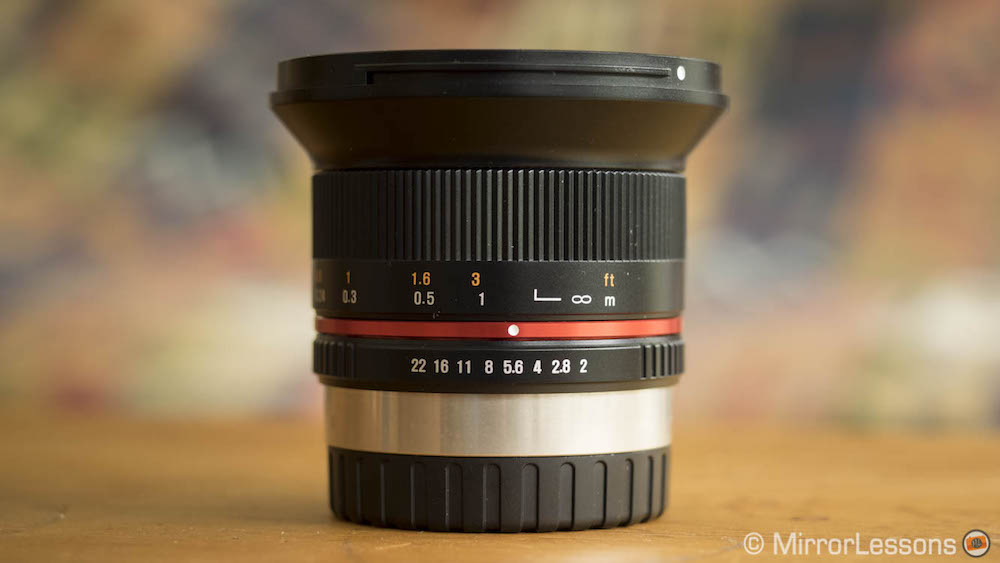
One of the best deals you can find for your Sony APS-C camera is the Samyang Rokinon 12mm f/2 whose field of view sits in between ultra wide and moderately wide at 18mm in 35mm terms.
The 12mm is small, lightweight manual focus prime with a metal chassis and a plastic finish. It doesn’t feature weather-sealing but the aperture ring is very precise and its focus ring is sufficiently stiff that it won’t move accidentally when shooting landscapes or astrophotography. Sadly it lacks a proper hyperfocal scale which is a bit odd considering this is a manual focus lens.
At f/2 sharpness is already excellent in the centre but the best results can be found between f/4 and f/5.6. The corners are softer at the fastest apertures and you’ll encounter some vignetting but this is to be expected. Distortion can be corrected via the lens profile in Lightroom but chromatic aberration, which is present up until f/8, is a bit trickier to eliminate. As for flare, it can appear in scenes with bright light sources but I never found it overly invasive.
Although we weren’t able to test it for astrophotography, many reviews hail it as one of the best options for this particular genre. For example, Lonely Speck states that the levels of coma at f/2 are very low and practically non-existent by f/2.8.
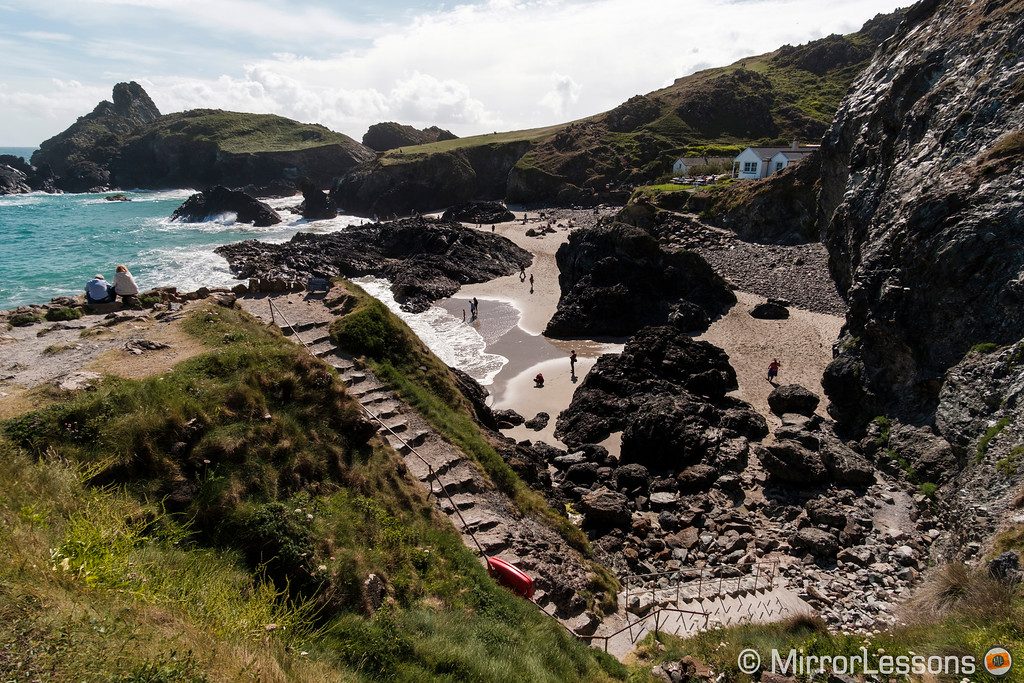
Why choose the Samyang Rokinon 12mm f/2 for your X Series camera:
- the perfect combination of affordability and quality
- excellent performance from the fastest aperture
To consider:
- manual focus only
- you cannot apply corrections to JPGs taken in-camera because the camera and lens don’t communicate EXIF data
Reminder: the links below are affiliate links. If you decided to buy something after clicking the link, we will receive a small commission.
Check price on Amazon | Amazon UK | B&H Photo | eBay
Image quality at a premium: Zeiss Touit 12mm f/2.8
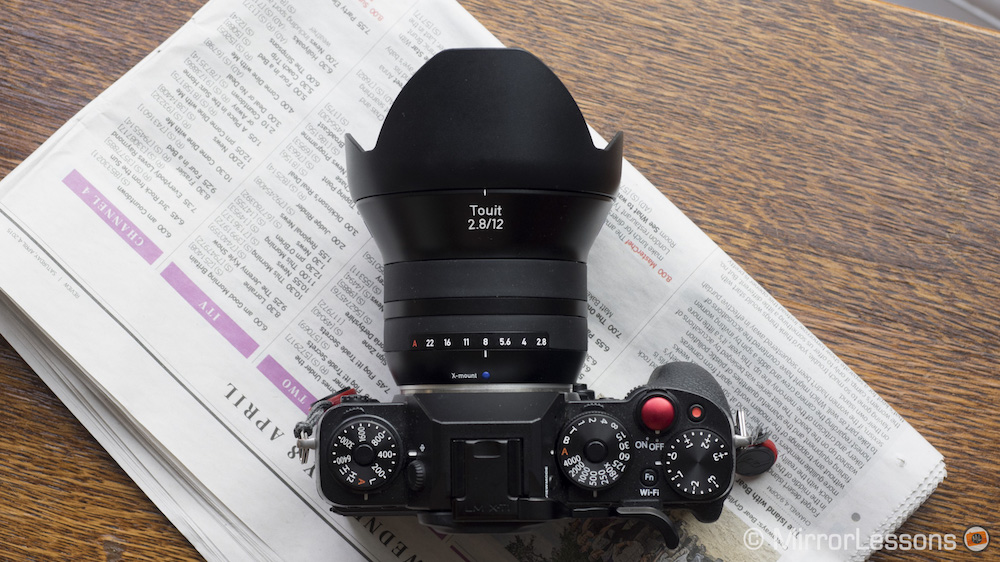
One of the pricier options on this list is the Zeiss Touit 12mm f/2.8 (18mm equivalent in 35mm terms) which was announced for Sony E-mount and Fujifilm X series cameras a few years ago. At the time of writing, it costs just shy of $1000 US.
With its funnel-like shape and large front element, it isn’t particularly small compared to many of the primes in the Sony APS-C range but it is portable and well-balanced on a body like the a6500. Most of the barrel is constructed from solid metal, with the exception of the smooth rubber focus ring which is very precise and enjoyable to use. Unfortunately, unlike the Fujifilm version of this lens (pictured above), it doesn’t have an aperture ring.
The results are very sharp through the aperture range up until about f/8, with peak performance occurring between f/4 and f/5.6. The bokeh is also very nice, so you can achieve good results by focusing at the minimum focus distance (16.5cm) and f/2.8. Coupled with this fast aperture, it also provides the perfect focal length for astrophotography
Distortion and vignetting aren’t an issue despite the ultra wide focal length of this lens, and flare and chromatic aberration hardly appear at all. I can’t really make a personal comment about the autofocus because we tested this lens on a Fujifilm body but reports suggest it is quick in S-AF but struggles a little more in C-AF, and it isn’t completely silent.
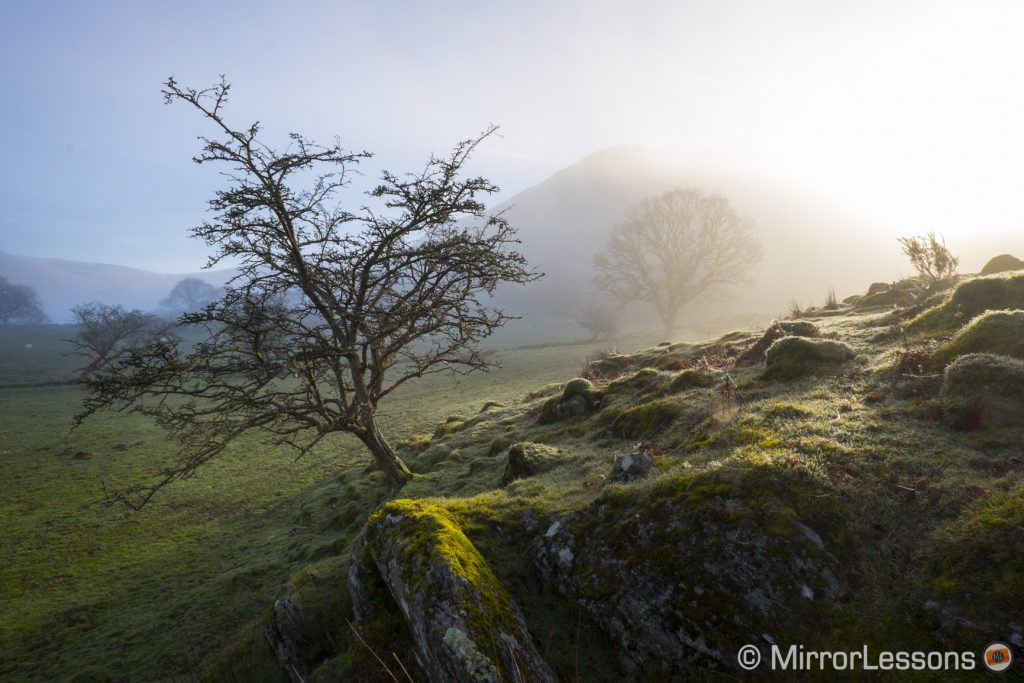
Why choose the Zeiss Touit 12mm f/2.8 for your Sony APS-C camera:
- optical quality is exactly what you’d expect from a Zeiss product
- the 2.8 aperture is handy for low-light work
To consider:
- one of the more expensive lenses on this list
Reminder: the links below are affiliate links. If you decided to buy something after clicking the link, we will receive a small commission.
Check price on Amazon | Amazon UK | B&H Photo | eBay
Budget option: 7artisans 12mm f/2.8 (18mm)
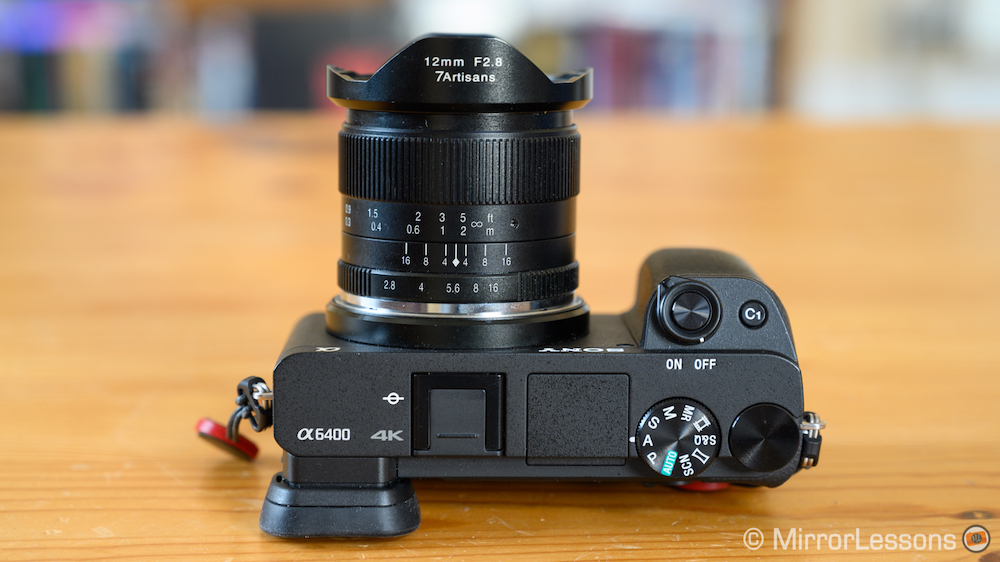
If you don’t have much to spend on a wide angle prime, the 7artisans definitely deserves your attention. At less than $200, it is more or less the same price as the Sigma 19mm (mentioned below) but provides a much wider field of view.
As you’d expect, it lacks electronic contacts and autofocus but centre sharpness is very good through the aperture range. In the corners, sharpness falls off at f/2.8 and f/4 but remains decent from f/8 through to its slowest aperture values. For the best overall results, I’d stick to f/5.6 and f/8.
Note that vignetting and chromatic aberration are present at f/2.8 and f/4 and flare will occur if you shoot into direct sunlight. Focus breathing is also substantial, so you’ll notice a change in your field of view as you adjust focus.
Happily the build quality leaves nothing to be desired. The metal chassis feels solid and hefty and the built-in lens hood suits the lens very well. Being a very compact lens, it is also a good match for Sony APS-C cameras. The ribbed focus ring is very smooth and precise, as is the de-clicked aperture ring. I only wish they’d included the f/11 marking on the barrel as I use this value quite often.
My biggest complaint concerns the plastic lens cap: it is fiddly to reattach and the clips don’t lock on tightly enough. I could easily see myself losing it at some point in the future!
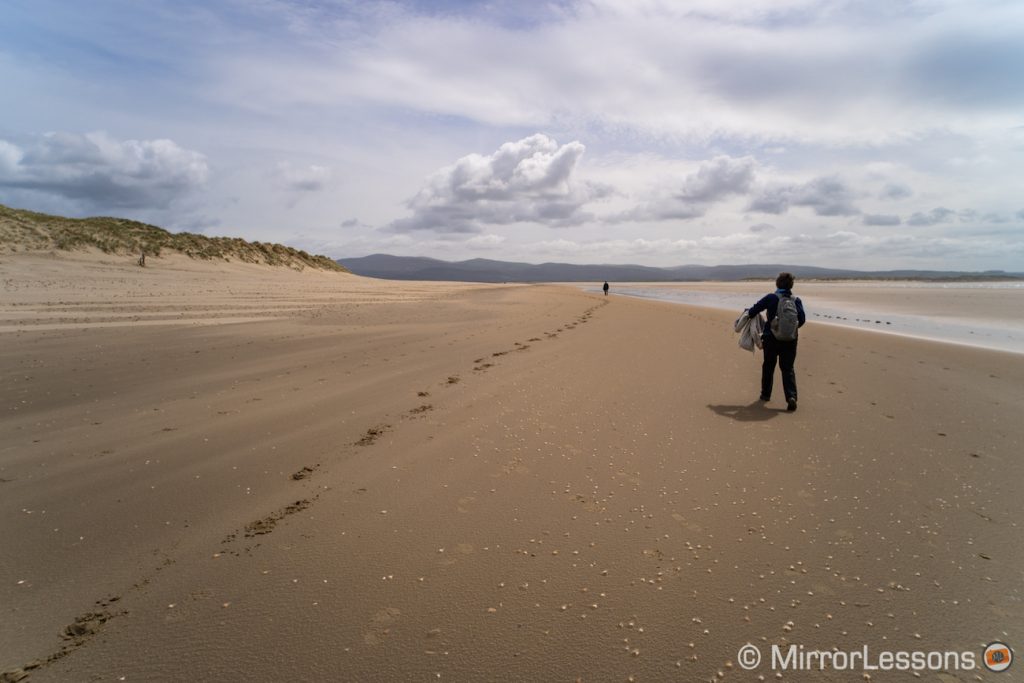
Why choose the 7artisans 12mm f/2.8 for your Sony APS-C camera:
- one of the widest and least expensive options listed here
- good build quality and good sharpness at f/5.6 and f/8
To consider:
- corners are softer than the centre, especially at f/2.8 and f/4
- manual focus lenses doesn’t transmit EXIF data
- noticeable focus breathing
- fiddly cap (but this may be limited to my copy)
Reminder: the links below are affiliate links. If you decided to buy something after clicking the link, we will receive a small commission.
Check price on Amazon | Amazon UK | B&H Photo | eBay
Wide Prime Lenses
The best: Sigma 16mm f/1.4 DC DN C
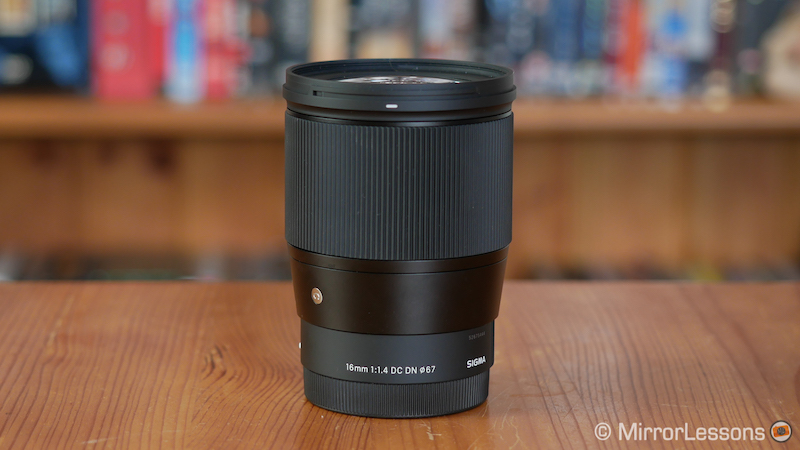
A wide-angle lens for Sony that left me a very good impression was the Sigma 16mm f/1.4 DC DN C (24mm in 35mm terms). This didn’t surprise me to be honest as I’ve fallen in love with almost every lens in Sigma’s Contemporary and Art series for mirrorless cameras so far!
It has a bright 1.4 aperture and comes at a very reasonable price, making it a very appealing choice for anyone who uses a Sony APS-C camera.
In our tests, we found that optical quality at the centre was at its best between f/2 and f/5.6 but f/1.4 remains perfectly useable. You might come across some chromatic aberration at the fastest values but you can easily correct it in post production. Most distortion is corrected thanks to the in-camera profile corrections and flare only occurs in strong backlit situations. The bokeh is also very smooth and pleasant, and you can achieve good subject separation by focusing close to your subject and using the fastest aperture.
The barrel is constructed from a mix of plastic, metal and Thermally Stable Composite and feels very solid in the hand but only the brass bayonet mount is sealed against dust and moisture. The deep ridges on the fly-by-wire focus ring give you a good grip and help you make fine adjustments, while the stepping motor allows for quick, silent and accurate performance for stills and video.
My only (small) complaint is that it is a little too large for the smallest Sony APS-C cameras, especially when the lens hood is attached.
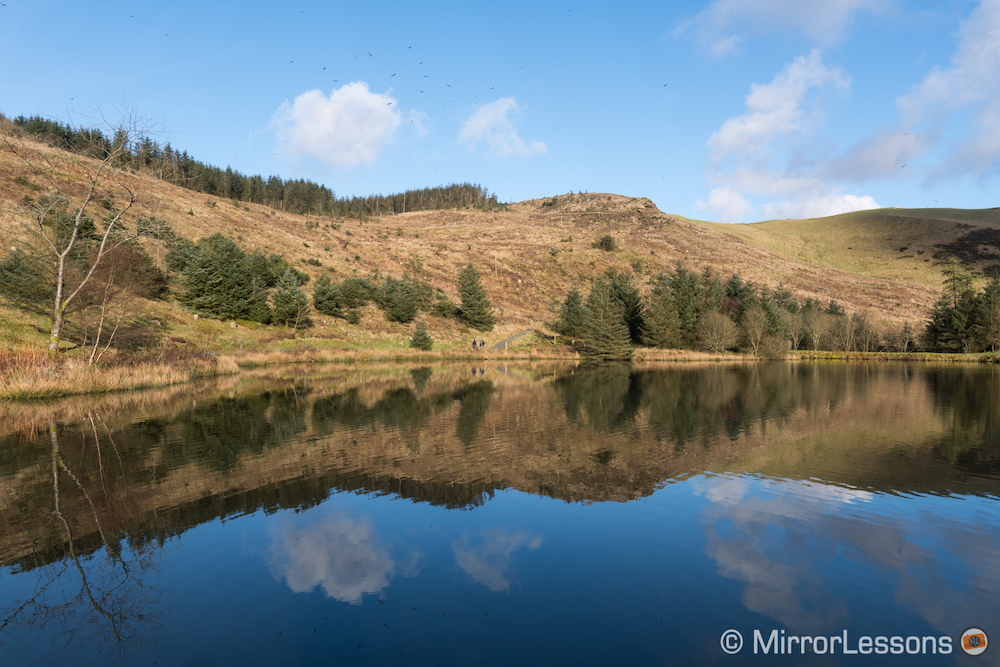
Why choose the Sigma 16mm 1.4 for your Sony APS-C camera:
- optical quality is excellent
- useful focal length
- the 1.4 aperture is handy for low-light work
To consider:
- somewhat large for small APS-C cameras
Reminder: the links below are affiliate links. If you decided to buy something after clicking the link, we will receive a small commission.
Check price on Amazon | Amazon UK | B&H Photo | eBay
The cheapest: Sigma 19mm f/2.8 DN
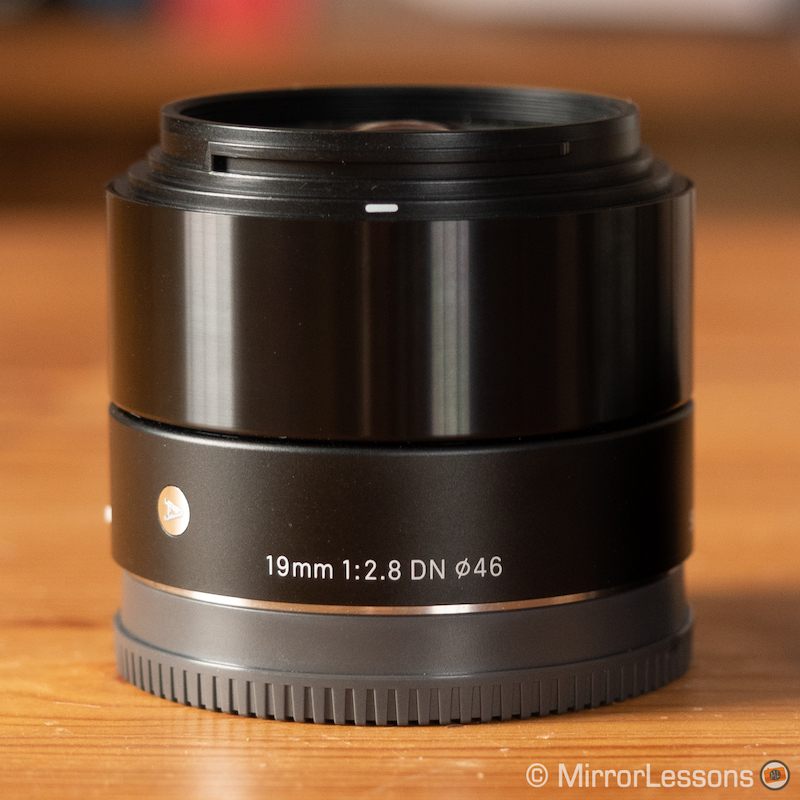
Before testing the 19mm, I admit that I didn’t have particularly high hopes given the very low price point of just $170 US and age of the lens. But as it turns out, it is a very good performer.
The lens is very compact, with a high quality plastic build and metal mount but sadly no weather-sealing. It comes with a smooth fly-by-wire focus ring and a 46mm filter thread.
Sharpness is very good even at f/2.8 and the quality of the background blur is decent. Distortion won’t pose a problem as long as you apply the correct lens profile to your image in post production and vignetting isn’t an issue. If the sun is in your frame, you can expect an orb-like green flare to appear in your image, so it is best to keep the lens hood attached at all times to mitigate the effects.
The only real downside of the 19mm is that it lacks full compatibility with Sony’s PDAF system so if you’re dealing with moving subjects, the performance won’t be stellar. When working in S-AF, we generally found the linear AF motor to be quick and silent.
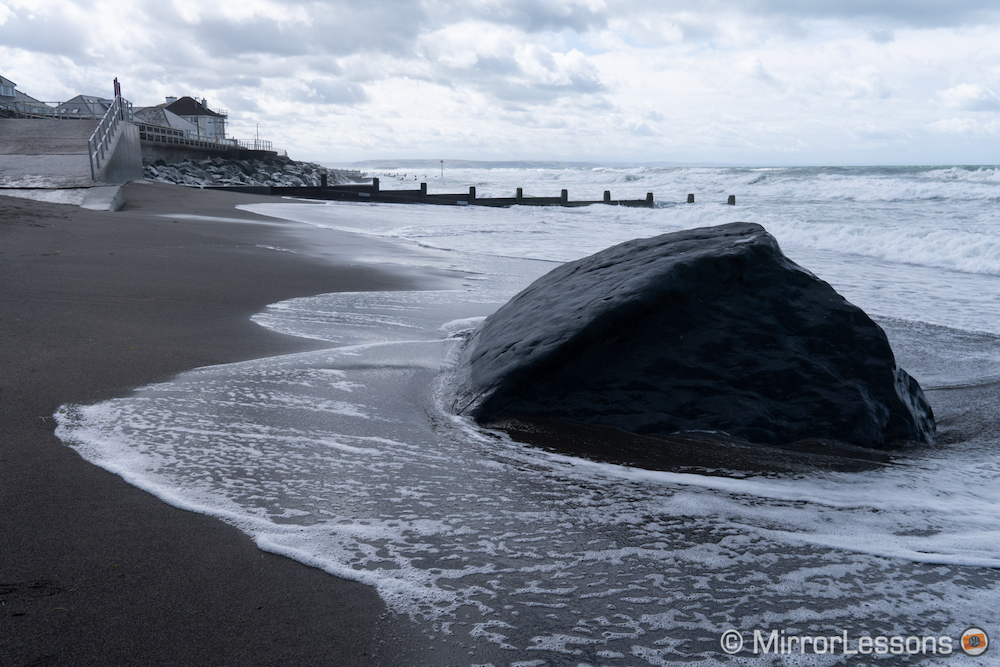
Why choose the Sigma 19mm f/2.8 for your Sony APS-C camera:
- very compact and inexpensive
- optical quality is excellent for the price
To consider:
- isn’t compatible with Sony’s PDAF system
Reminder: the links below are affiliate links. If you decided to buy something after clicking the link, we will receive a small commission.
Check price on Amazon | Amazon UK | B&H Photo | eBay
Budget option I: Sony E 20mm f/2.8
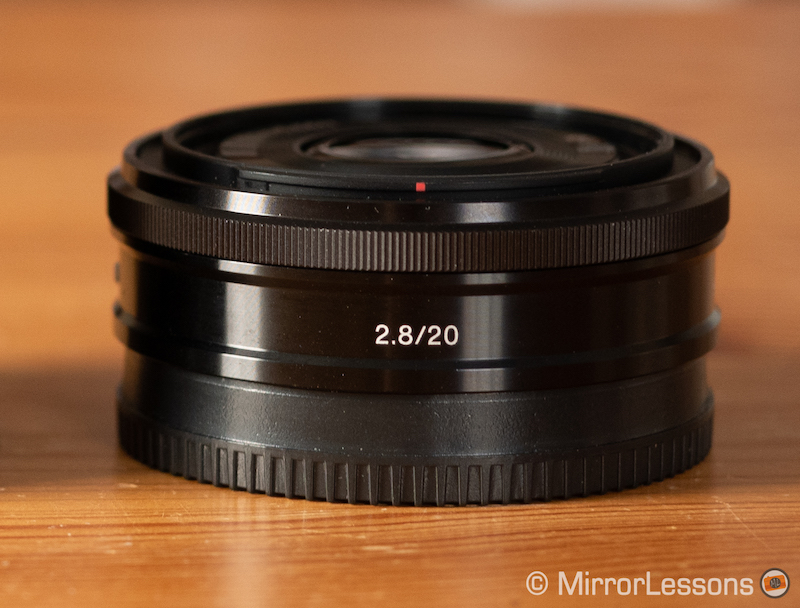
A lens whose performance comes very close to that of the Sigma 19mm is Sony’s own 20mm f/2.8 (30mm in 35mm format). The main difference is that despite falling into the “budget” lens category, it is still $150 more expensive than the 19mm.
There are a couple of other advantages that go with choosing the Sony 20mm – namely its compactness and full compatibility with Sony’s PDAF system – but the Sigma 19mm is a little sharper at f/2.8 and in the corners. Used between f/4 and f/11, the performance of the Sony is just as good as the Sigma.
The bokeh is decent for a wide angle lens and flare resistance is good as long as you don’t shoot into direct sunlight. Some lateral chromatic aberration is present up until f/4 while the heavy barrel distortion is corrected via the lens profile.
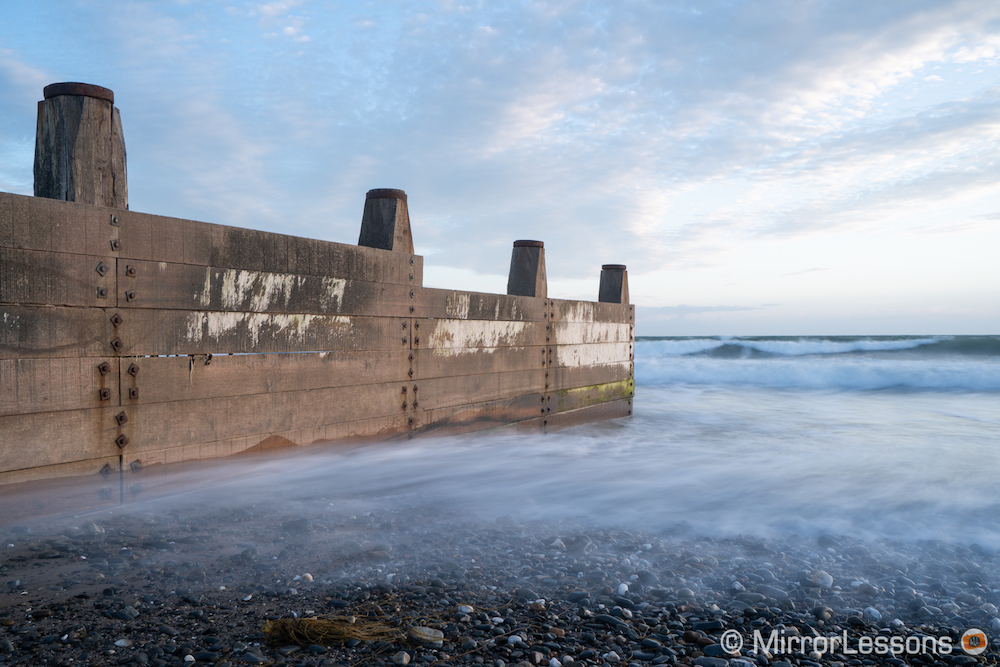
Why choose the Sony 20mm f/2.8 for your Sony APS-C camera:
- very compact
- compatible with Sony’s PDAF system
To consider:
- more expensive than the Sigma 19mm
Reminder: the links below are affiliate links. If you decided to buy something after clicking the link, we will receive a small commission.
Check price on Amazon | Amazon UK | B&H Photo | eBay
Budget option II: Rokinon 21mm f/1.4 (31.5mm)
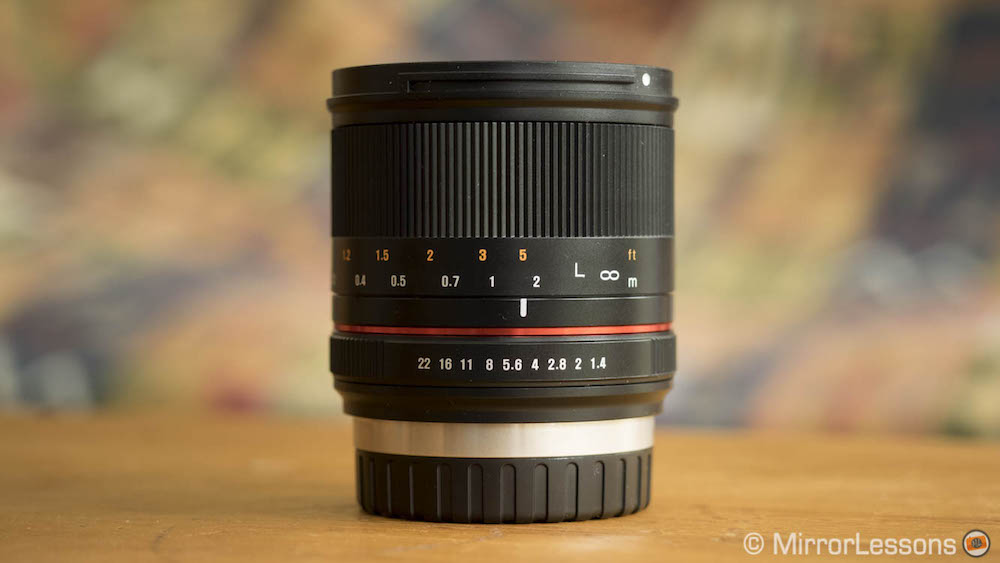
The Samyang / Rokinon 21mm is a light, compact and affordable manual focus prime available for most mirrorless systems including Sony E. (We tested it on the Fujifilm X-Pro2.)
It is a little soft at f/1.4 at the centre but improves from f/2 whereas the corners only improve from f/2.8. You can expect excellent results at f/5.6 and the performance is also good at short focus distances where you also get a decent out-of-focus rendering. The resistance to flare and chromatic aberration is excellent and the unusual field of view (close to a 31.5mm lens in full-frame terms) makes it versatile for street, reportage and landscapes.
The build quality is good, with its mixed metal and plastic construction, but the loose focus ring is somewhat annoying, as is the lack of a hyperfocal scale and electronic contacts to transfer EXIF data. That said, it is one of the only f/1.4 lenses for Sony APS-C, so it remains a unique offering in this category.
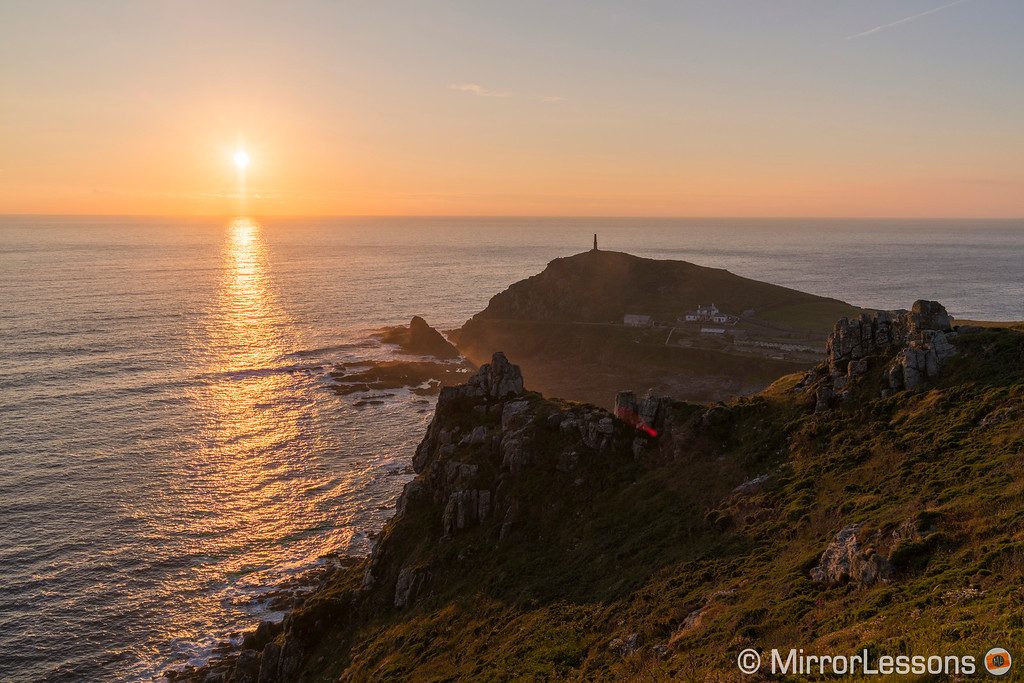
Why choose the Samyang Rokinon 21mm f/1.4 for your Sony APS-C camera:
- fast f/1.4 aperture is great for low-light work and separating subject from background
- cheaper than most alternatives
To consider:
- corners are softer than the centre at all values
- 31.5mm equivalent focal length is somewhat unusual (it sits between a 28mm and 35mm lens)
Reminder: the links below are affiliate links. If you decided to buy something after clicking the link, we will receive a small commission.
Check price on Amazon | Amazon UK | B&H Photo | eBay
Wide Angle Zoom Lenses for Sony E-mount APS-C
Zoom lenses are convenient for wide-angle photography because they allow you to adjust your composition without physically changing your location. They are especially useful when you want to eliminate or include a specific element close to the edge of the frame, but cannot physically move due to constraints in your environment (such the edge of a cliff or a brick wall).
The main drawback of most wide-angle zooms designed for Sony APS-C cameras however is that they aren’t particularly bright, making them more challenging to use in low-light situations.
Although there are quite a few E-mount zooms in existence, only a couple suit the size and weight of the APS-C range.
The widest: E 10-18mm f/4 OSS
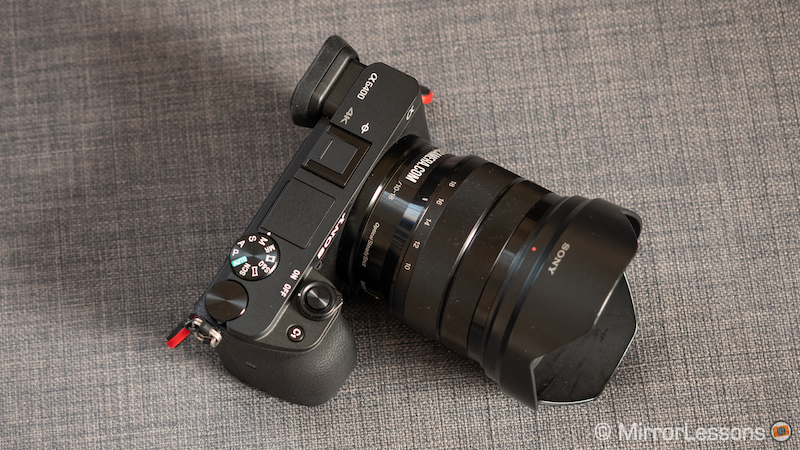
The Sony E 10-18mm f/4 OSS was, at the time of its release in 2012, the only wide-angle zoom for Sony APS-C, and to be honest, the selection hasn’t really improved since then! It covers an equivalent range of 15-27mm, making it a very handy companion for landscapes and architecture.
Although it benefits from a constant f/4 aperture, sharpness is never as good at this value as it is at f/5.6 or f/8. This is especially true the more you zoom out. This weakness aside, the 10-18mm is a well-rounded performer, delivering good autofocus on the latest bodies and decent optical stabilisation down to 1/2s (at 10mm) or 1/4s (at 18mm).
As you’d expect from a wide-angle lens, there is lots of distortion and vignetting but both can be corrected by applying the lens profile. Chromatic aberration isn’t an issue and flare will only show up if you shoot directly into a strong light source. Thanks to its minimum focus distance of 25cm, you can comfortably work with this lens even in tight spaces.
The build quality is on par with most Sony APS-C lenses: it has a black plastic finish and a metal lens mount. Despite being an ultra wide angle lens, it is fairly compact, tipping the scales at just 225g. The focus ring and zoom ring are adjacent to each other, yet you can tell the difference between them thanks to the difference in size. Both are pleasant to use.
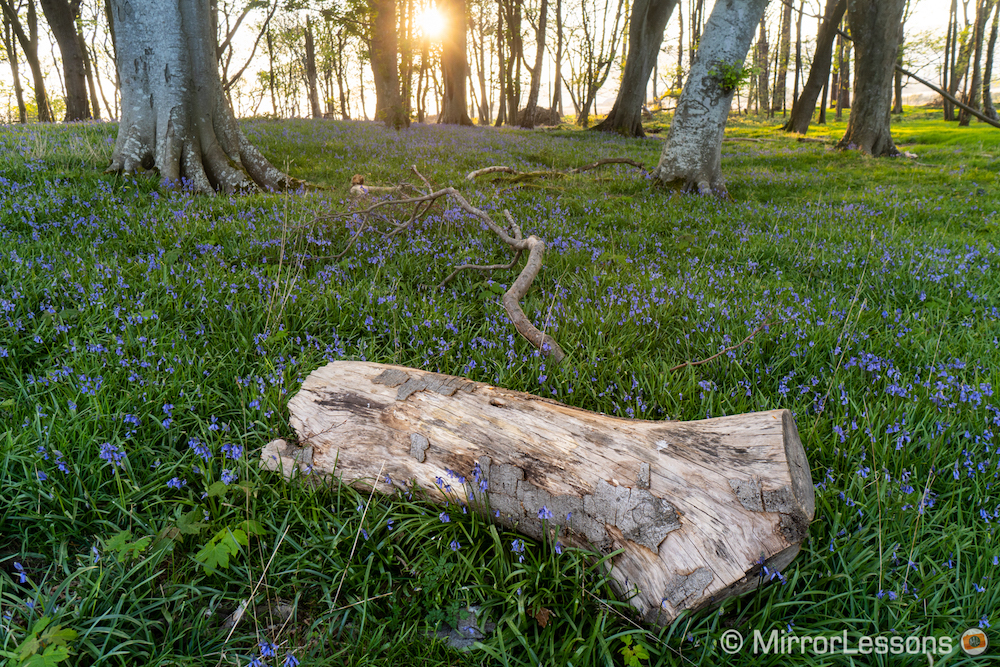
Why choose the Sony E 10-18mm f/4 for your Sony APS-C camera:
- it’s the only ultra wide AF zoom for APS-C cameras
- offers a very versatile range of focal lengths
- comes with optical stabilisation
To consider:
- sharpness isn’t as good at f/4 as it is at other values
- lots of distortion and vignetting (but it can be corrected)
Reminder: the links below are affiliate links. If you decided to buy something after clicking the link, we will receive a small commission.
Check price on Amazon | Amazon UK | B&H Photo | eBay
The all-rounder: Vario-Tessar T* E 16-70mm f/4 ZA OSS
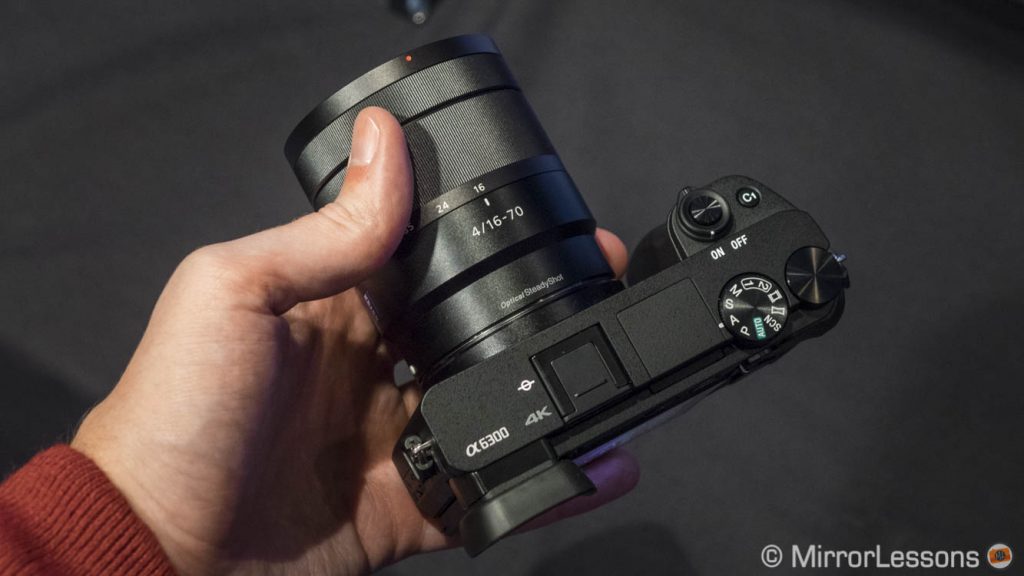
An all-purpose lens that most Sony APS-C users will want in their collection is the 16-70mm f/4 ZA. Although sharpness is generally excellent through zoom and aperture ranges, it delivers the best results at the widest angle between f/4 and f/11, which is good news for landscape photographers. The performance deteriorates a little in the corners and at the longest focal length (70mm).
Like many other native E lenses, the 16-70mm is quite compact on APS-C bodies, weighing just 308g. It features a flexible range of 24-105mm in 35mm equivalent terms and a constant f/4 aperture. There isn’t any weather-sealing, which is a shame considering its price, but you can’t really complain about the build quality which consists of an all-metal exterior and nicely damped zoom and focus rings.
You might spot some chromatic aberration towards the edge of the frame or flare if you shoot into direct sunlight. Vignetting isn’t an issue but distortion must be corrected with the lens profile since it is quite evident at 16mm.
Another bonus for users of non-stabilised bodies is the inclusion of OSS, which means you can take sharp shots down to 1/10s at 16mm if you are steady. Focusing is also fast on the latest bodies despite the age of the lens.

Why choose the E 16-70mm ZA for your Sony APS-C camera:
- it works as both a landscape lens and all-purpose lens thanks to flexible zoom range
- comes with OSS
To consider:
- quite expensive
- sharpness falls off in the corners and at 70mm
- no weather sealing
Reminder: the links below are affiliate links. If you decided to buy something after clicking the link, we will receive a small commission.
Check price on Amazon | Amazon UK | B&H Photo | eBay
Excluded / Not yet tested
- Laowa 10-18mm f/4.5-5.6: A new manual focus wide-angle zoom for Sony FE cameras. It isn’t yet available to test but it could potentially become a direct rival for the Sony E 10-18mm. We may include it on this list if we find that it balances well on APS-C bodies.
- Sony E PZ 18-105mm f/4 G OSS: This is our go-to zoom lens whenever we test Sony APS-C cameras. It offers good optical performance, has a fast AF motor and includes optical stabilisation. The zoom range starts from a 28mm equivalent field of view and has a longer zoom reach which makes it more useful for a variety of purpose. The electronic zoom motor suits video recording well. All this said, we prefer to recommend the 16-70mm lens if wide landscapes are a priority.
- Sony E 18-135mm f/3.5-5.6 OSS: The same reasoning as above. It is an all-purpose lens that can be used for so many other genres, so once again we recommend the 16-70mm.
- Rokinon 16mm f/2 ED AS UMC CS: We haven’t yet tested this manual focus prime. If you’ve had any experience with this lens, please let us know in the comments section below!
- Laowa 15mm f/2 Zero-D: The Laowa 15mm is a full-frame prime which could suit APS-C quite well as a 22.5mm lens. We haven’t tested it yet but we hope to receive a copy to review soon.
- Sony E 16mm f/2.8: Up until the arrival of the Sigma 16mm f/1.4, the Sony 16mm f/2.8 pancake lens was the only option Sony E-mount users had if they wanted a 24mm equivalent prime (35mm format) with autofocus. The main advantages of this lens compared to the Sigma are its extremely compact construction and a very affordable price point. However everything else about the lens feels outdated, from the lacklustre optical quality to the AF motor, which isn’t compatible with Sony’s latest PDAF system. I would only advise getting this lens if you want to spend as little as possible for this particular focal length, or prioritise compactness above all other features. Otherwise the Sigma option is the way to go.
- Meike 12mm f/2.8: I had a hard time choosing between this lens and the 7artisans 12mm. Although the Meike is good for the price, the corners are very soft and don’t really improve until f/8.
- E 24mm f/1.8 ZA: We haven’t yet tested this lens but in truth, it sits just outside of the wide-angle range anyway due to its equivalent field of view of 36mm. (Technically speaking a wide-angle lens is anything wider than 35mm.) I know, we’re talking about a difference of a mere millimetre, but we feel this lens would suit a street / documentary list better.
